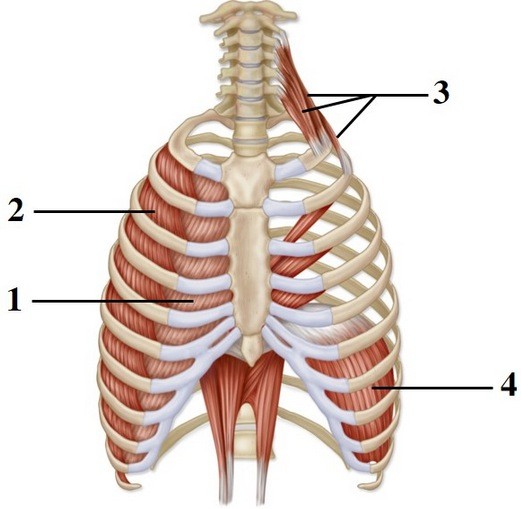 This figure shows the muscles of respiration. What muscle does number 4 indicate?
This figure shows the muscles of respiration. What muscle does number 4 indicate?
A. Scalene
B. Diaphragm
C. External intercostal
D. Internal intercostal
E. Transversus thoracis
Answer: B
You might also like to view...
Which does not belong to the peripheral nervous system?
A. Spinal nerve B. Ganglion C. Spinal cord D. Cranial nerve E. Peripheral nerve
A(n) ____________________ neuron sends impulses away from the CNS
Fill in the blank(s) with correct word
What is hemostasis?
A. the maintenance of relatively stable conditions in the internal environment B. the prevention or stoppage of blood loss C. a disease in which blood clot formation is impaired D. a protein inside red blood cells that binds oxygen with high affinity E. the set point for normal arterial blood pressure
Why is it sometimes advantageous to inject drugs intramuscularly rather than subcutaneously or intravenously?
A. Drugs injected into muscles are absorbed very rapidly into the bloodstream. B. Drugs may be injected more superficially if they are injected into muscle bellies. C. Skeletal muscle tissue contains more mitochondria so drugs are metabolized more quickly in muscles. D. Smaller quantities of drugs are more effective when injected into muscle bellies. E. Drugs injected into muscles are absorbed gradually into the bloodstream.